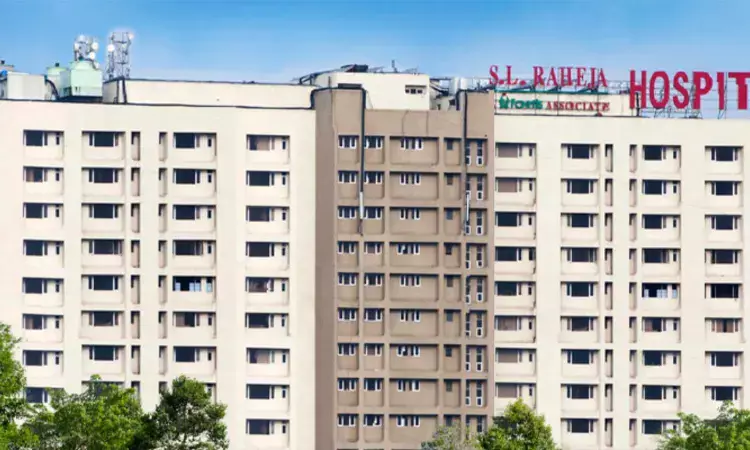- Home
- Medical news & Guidelines
- Anesthesiology
- Cardiology and CTVS
- Critical Care
- Dentistry
- Dermatology
- Diabetes and Endocrinology
- ENT
- Gastroenterology
- Medicine
- Nephrology
- Neurology
- Obstretics-Gynaecology
- Oncology
- Ophthalmology
- Orthopaedics
- Pediatrics-Neonatology
- Psychiatry
- Pulmonology
- Radiology
- Surgery
- Urology
- Laboratory Medicine
- Diet
- Nursing
- Paramedical
- Physiotherapy
- Health news
- Fact Check
- Bone Health Fact Check
- Brain Health Fact Check
- Cancer Related Fact Check
- Child Care Fact Check
- Dental and oral health fact check
- Diabetes and metabolic health fact check
- Diet and Nutrition Fact Check
- Eye and ENT Care Fact Check
- Fitness fact check
- Gut health fact check
- Heart health fact check
- Kidney health fact check
- Medical education fact check
- Men's health fact check
- Respiratory fact check
- Skin and hair care fact check
- Vaccine and Immunization fact check
- Women's health fact check
- AYUSH
- State News
- Andaman and Nicobar Islands
- Andhra Pradesh
- Arunachal Pradesh
- Assam
- Bihar
- Chandigarh
- Chattisgarh
- Dadra and Nagar Haveli
- Daman and Diu
- Delhi
- Goa
- Gujarat
- Haryana
- Himachal Pradesh
- Jammu & Kashmir
- Jharkhand
- Karnataka
- Kerala
- Ladakh
- Lakshadweep
- Madhya Pradesh
- Maharashtra
- Manipur
- Meghalaya
- Mizoram
- Nagaland
- Odisha
- Puducherry
- Punjab
- Rajasthan
- Sikkim
- Tamil Nadu
- Telangana
- Tripura
- Uttar Pradesh
- Uttrakhand
- West Bengal
- Medical Education
- Industry
Leadless Pacemaker Saves Life of 92-Year-Old Woman at SL Raheja Hospital

Mumbai: Elizabeth Fijardo, a 92-year-old retired school teacher, underwent a groundbreaking procedure at SL Raheja Hospital, Mahim - A Fortis Associate, when she received a leadless pacemaker, a minimally invasive device that would help regulate her heart rhythm, through her neck vein.
This procedure, the first of its kind in Mumbai, offered a safer and more efficient method for pacemaker implantation, and was modified due to anatomical issues. What made this surgery even more remarkable was that Dr Haresh Mehta, Director-Interventional & Structural Cardiology, SL Raheja Hospital, Mahim - A Fortis Associate, who performed the procedure was once her student! He was accompanied by Interventional Cardiologists Dr Kayan Siodia and Dr Raghav Nagpal.
Recalling how it all started, Wilfred Fijardo, the patient’s son, said, “My mother started experiencing breathlessness, felt dizzy and had difficulty walking. We consulted the doctor on March 18; he prescribed medication for a month and asked us to follow-up after finishing the course. However, the very next morning my mother woke up at 4 am gasping for breath and we took her to the hospital.
Also Read:SL Raheja Hospital-Fortis launches one of Its kind ICU Unit In Mumbai
The doctors told us she needed a pacemaker to regulate her heart’s rhythm, and the surgery was conducted on March 23. She opted for a leadless pacemaker as she was worried about the healing time associated with traditional pacemakers.”
Talking about the technology behind a leadless pacemaker, Dr Raghav Nagpal and Dr. Kayan Siodia, Consultant Interventional Cardiologists, SL Raheja Hospital, Mahim-A Fortis Associate added, “A leadless pacemaker does not require the traditional leads (wires) to be implanted into the heart. Unlike conventional pacemakers, which consist of a small pulse generator implanted under the skin with one or more leads connected to the heart, a leadless pacemaker is a compact device that is directly implanted into the heart.
The pacemaker is positioned directly in the right ventricle, where it delivers electrical impulses to regulate the heart's rhythm.
The procedure requires no incision in the chest or under the skin, only a small puncture in the groin or neck. The pacemaker that was inserted in the patient is a small tube-like device measuring only 2 inches (a conventional pacemaker would measure 3 X 2 inches), making it ideal for older patients with smaller bodies or those who require less invasive solutions.”
Describing the procedure, Dr Haresh Mehta, Director-Interventional & Structural Cardiology, SL Raheja Hospital, Mahim - A Fortis Associate said, “We did an ECG, which revealed a very slow heart rhythm, indicating a complete heart block, which typically requires a pacemaker. We went for a leadless pacemaker in this case as the patient was small-built, and her heart was small in size.
The leadless pacemaker is small and compact and is implanted directly into the heart without the need for external leads, which makes it ideal for patients with smaller hearts or limited space in the chest. The veins in her leg were tortuous (curvy), and due to anatomical constraints of the right atrium, we used the jugular vein instead, leading to a successful procedure with minimal disruption. This is a very rare procedure, especially in India.”
“As we see in older patients, leadless pacemakers, which are directly implanted into the heart, offer a less invasive solution. However, not all patients are candidates for leadless pacemakers, and a thorough evaluation by a Cardiologist is necessary to determine the best option. We did a Doppler Test to determine if Elizabeth was the right candidate for a leadless pacemaker,” Dr Mehta added.
Elizabeth has made a full recovery, and now her doting children are cherishing every moment with her. What makes this even more special is that one of her former students, whose life she has shaped through her wisdom and teachings in English and History, ended up saving her life, bringing their journey full circle in a powerful and meaningful way.
Kajal Rajput joined Medical Dialogues as an Correspondent for the Latest Health News Section in 2019. She holds a Bachelor's degree in Arts from University of Delhi. She manly covers all the updates in health news, hospitals, doctors news, government policies and Health Ministry. She can be contacted at editorial@medicaldialogues.in Contact no. 011-43720751


